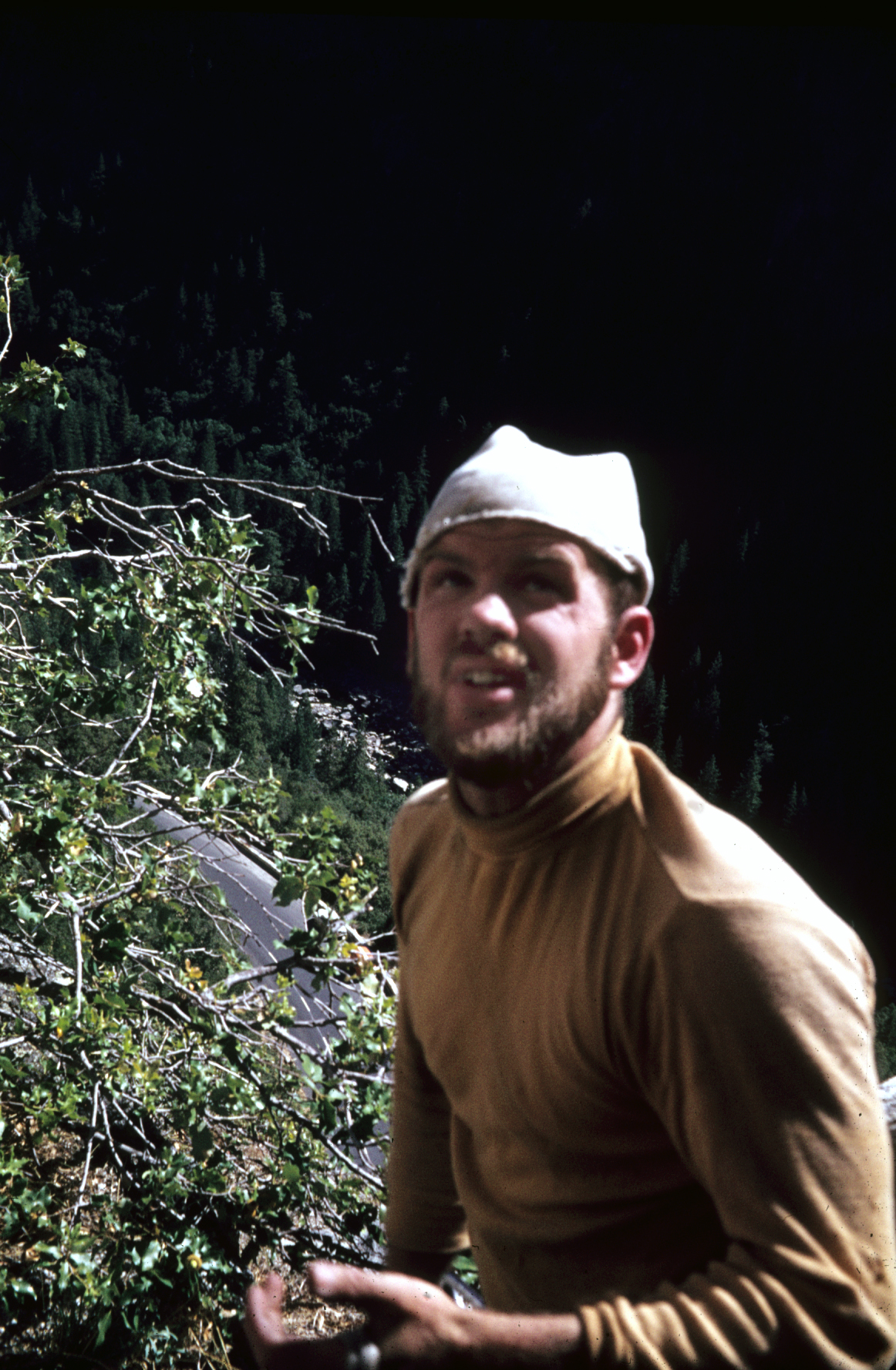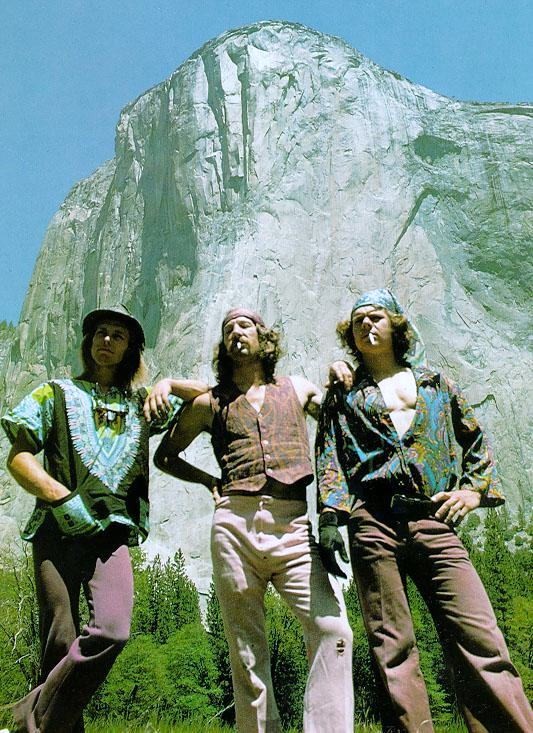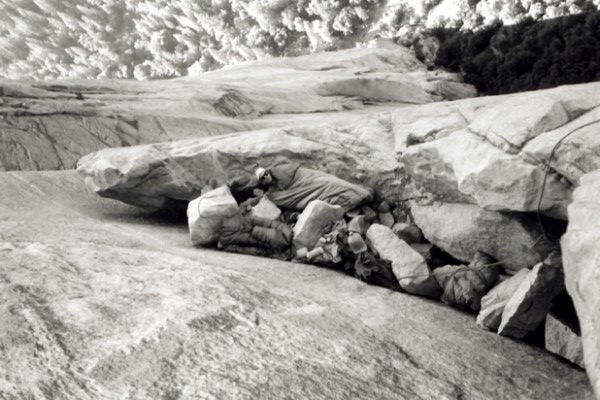|
Chuck Pratt
Charles Marshall Pratt (March 5, 1939 – December 16, 2000) was an American rock climber known for big wall climbing first ascents in Yosemite Valley. He was also a long-time climbing instructor and mountain guide with Exum Mountain Guides in the Grand Tetons. Climbing career In August, 1958, Pratt completed the first ascent of the north face of Fairview Dome in Tuolumne Meadows in Yosemite National Park with Wally Reed, This climb, completed when Pratt was 19, is described as "marvelously direct" and a "memorable climb" in Fifty Classic Climbs of North America. In 1959, he completed the first ascent of the East Face of Washington Column (later called 'Astroman') in Yosemite Valley with Warren Harding and Glen Denny. In 1960, he made the second ascent of The Nose on El Capitan in Yosemite Valley, a route pioneered by Warren Harding in 1958. He climbed with Royal Robbins, Tom Frost and Joe Fitschen, and they made the climb in one continuous push lasting seven days. Robbin ... [...More Info...] [...Related Items...] OR: [Wikipedia] [Google] [Baidu] |
United States
The United States of America (U.S.A. or USA), commonly known as the United States (U.S. or US) or America, is a country primarily located in North America. It consists of 50 U.S. state, states, a Washington, D.C., federal district, five major unincorporated territories, nine United States Minor Outlying Islands, Minor Outlying Islands, and 326 Indian reservations. The United States is also in Compact of Free Association, free association with three Oceania, Pacific Island Sovereign state, sovereign states: the Federated States of Micronesia, the Marshall Islands, and the Palau, Republic of Palau. It is the world's List of countries and dependencies by area, third-largest country by both land and total area. It shares land borders Canada–United States border, with Canada to its north and Mexico–United States border, with Mexico to its south and has maritime borders with the Bahamas, Cuba, Russia, and other nations. With a population of over 333 million, it is the List of ... [...More Info...] [...Related Items...] OR: [Wikipedia] [Google] [Baidu] |
The Nose (El Capitan)
''The Nose'' is one of the original technical climbing routes up El Capitan. Once considered impossible to climb, El Capitan is now the standard for big-wall climbing. It is recognized in the historic climbing text '' Fifty Classic Climbs of North America'' and considered a classic around the world. El Capitan has two main faces, the Southwest (on the left when looking directly at the wall) and the Southeast. Between the two faces juts a massive prow. While today there are numerous established routes on both faces, the most popular and historically famous route is ''The Nose'', which follows the massive prow. First ascents Once thought to be unclimbable, the high granite walls of Yosemite Valley began to see their first attempts and first ascents in the 1950s. One of the most coveted routes was the Northwest Face of Half Dome, and among those coveting it was Californian Warren Harding (Harding made an unsuccessful attempt on Half Dome in 1955, and returned for the 1957 seas ... [...More Info...] [...Related Items...] OR: [Wikipedia] [Google] [Baidu] |
Jim Bridwell
Jim Bridwell (July 29, 1944 – February 16, 2018) was an American rock climber and mountaineer, active since 1965, especially in Yosemite Valley, but also in Patagonia and Alaska. He was noted for pushing the standards of both free climbing and big-wall climbing, and later alpine climbing. He wrote numerous articles on climbing for leading sport publications. He was an apprentice to Royal Robbins and Warren Harding (climber). He was the unofficial leader of the Stonemasters. Bridwell is credited with over 100 First Ascents in Yosemite Valley, in addition to conducting the first one-day ascent of The Nose of El Capitan on May 26, 1975 with John Long and Billy Westbay. He founded Yosemite National Park's Search and Rescue Team (YOSAR), and spearheaded many rescues that became textbook for search-and-rescue operations. He was a leading force in the changing techniques of climbing and an innovator/inventor of widely used and copied climbing gear, including copperheads ... [...More Info...] [...Related Items...] OR: [Wikipedia] [Google] [Baidu] |
Dehydration
In physiology, dehydration is a lack of total body water, with an accompanying disruption of metabolic processes. It occurs when free water loss exceeds free water intake, usually due to exercise, disease, or high environmental temperature. Mild dehydration can also be caused by immersion diuresis, which may increase risk of decompression sickness in divers. Most people can tolerate a 3-4% decrease in total body water without difficulty or adverse health effects. A 5-8% decrease can cause fatigue and dizziness. Loss of over ten percent of total body water can cause physical and mental deterioration, accompanied by severe thirst. Death occurs at a loss of between fifteen and twenty-five percent of the body water.Ashcroft F, Life Without Water in Life at the Extremes. Berkeley and Los Angeles, 2000, 134-138. Mild dehydration is characterized by thirst and general discomfort and is usually resolved with oral rehydration. Dehydration can cause hypernatremia (high levels of s ... [...More Info...] [...Related Items...] OR: [Wikipedia] [Google] [Baidu] |
Tenaya Canyon
Tenaya Canyon is a dramatic and dangerous canyon in Yosemite National Park, California, USA, that runs from the outlet of Tenaya Lake 10 miles down to Yosemite Valley, carrying water in Tenaya Creek through a series of spectacular cascades and pools and thence into a deep canyon below Cloud's Rest, a giant granite mountain adjacent to Half Dome. Waterfalls on the creek inside the canyon include Pywiack Cascade (named for Pywiack Dome) and Three Chute Falls, near Mirror Lake. The top of the canyon can be seen from Tioga Pass Road ( Route 120), which goes through Tuolumne Meadows and Tioga Pass. From Olmsted Point (a roadside viewing area), Clouds Rest and Yosemite's signature Half Dome dominate the canyon. At the bottom of the canyon, in Yosemite Valley, lies Mirror Lake, accessible by shuttle bus and a short walk. The Quarter Domes are not far, up Tenaya Canyon. The canyon has no foot trail and is notoriously difficult to navigate, particularly in spring and summer when w ... [...More Info...] [...Related Items...] OR: [Wikipedia] [Google] [Baidu] |
Yvon Chouinard
Yvon Chouinard (born November 9, 1938) is an American rock climber, environmentalist, philanthropist and outdoor industry businessman. His company, Patagonia, is known for its commitment to protecting the environment. Chouinard is also a surfer, kayaker, and falconer and is particularly fond of '' tenkara'' fly-fishing.''Fly Rod and Reel'' magazine, "Simple Gifts", by Yvon Chouinard, Oct/Nov '09 He has written about climbing issues and ethics and on mixing environmentalism and business. Early life Chouinard's father was a French-Canadian handyman, mechanic, and plumber. In 1947, Yvon and his family moved from Lewiston, Maine to Southern California. They were Catholic. His early climbing partners included Royal Robbins and Tom Frost.Yvon Chouinard, , Outside Online A |
Steve Roper
Steve Roper is a noted climber and historian of the Sierra Nevada in the United States. He along with Allen Steck are the founding editors of the Sierra Club journal ''Ascent''. Roper is the winner of the Sierra Club's Francis P. Farquhar Mountaineering Award for 1983. He is also, with Allen Steck, the recipient of the American Alpine Club's Literary Award (1995). Publications * "A Climber's Guide to Yosemite Valley" (1964) LCC # 63-21911 * ''A Climber's Guide to Pinnacles National Monument'' (1966), * "Climber's Guide to Yosemite Valley" (1971), * ''The Climber's Guide to the High Sierra,'' (1976), * ''Fifty Classic Climbs of North America'', (1979), * "Timberline Country: The Sierra High Route" (1982) * ''Sierra High Route: Traversing Timberline Country'' (1997), * Publications as editor * * Notable ascents * 1959 ''North Face'' of Middle Cathedral Rock, Yosemite Valley, CA (VI 5.9 A4), with Bob Kamps and Chuck Pratt. * 1963, first free ascent of the Kor-Inga ... [...More Info...] [...Related Items...] OR: [Wikipedia] [Google] [Baidu] |
Moab, Utah
Moab () is the largest city and county seat of Grand County in eastern Utah in the western United States, known for its dramatic scenery. The population was 5,366 at the 2020 census. Moab attracts many tourists annually, mostly visitors to the nearby Arches and Canyonlands National Parks. The town is a popular base for mountain bikers who ride the extensive network of trails including the Slickrock Trail, and for off-roaders who come for the annual Moab Jeep Safari. History Early years The Biblical name Moab refers to an area of land located on the eastern side of the Jordan River. Some historians believe the city in Utah came to use this name because of William Andrew Peirce, the first postmaster, believing that the biblical Moab and this part of Utah were both "the far country". However, others believe the name has Paiute origins, referring to the word ''moapa'', meaning "mosquito". Some of the area's early residents attempted to change the city's name, because in t ... [...More Info...] [...Related Items...] OR: [Wikipedia] [Google] [Baidu] |
Castleton Tower
Castleton Tower (officially, Castle Rock) is a Wingate Sandstone tower standing on a 1,000 foot Moenkopi-Chinle cone above the northeastern border of Castle Valley, Utah. The tower is world-renowned as a subject for photography and for its classic rock climbing routes, the most famous of which is the Kor-Ingalls Route featured in Fifty Classic Climbs of North America. It can be accessed by a trail that begins south of the tower at a primitive camp ground. Location Castleton Tower sits at the southern terminus of a ridge made mostly of red sand, gravel, scatter boulders, and few short cliff lines. The ridge that runs north to south for about at its high point. Castleton Tower (~40'x400') shares the ridge with a structure at the ridge's Northern terminus with a similar height but considerable larger area known as ''The Rectory'' (~200'x1000'). This second structure is also referred to as ''The Priest and Nuns'' although those names are more often applied to specific structu ... [...More Info...] [...Related Items...] OR: [Wikipedia] [Google] [Baidu] |
Kor-Ingalls Route (Castleton Tower)
The Kor-Ingalls Route is a traditional rock climbing route located on Castleton Tower. Castleton Tower sits in Castle Valley North-East of Moab, Utah. The Route is recognized in the historic climbing text ''Fifty Classic Climbs of North America ''Fifty Classic Climbs of North America'' is a climbing guidebook and history written by Steve Roper and Allen Steck. It is considered a classic piece of climbing literature, known to many climbers as simply "The Book", and has served as an inspir ...'' and considered a classic around the world. References External links rockclimbing.com [...More Info...] [...Related Items...] OR: [Wikipedia] [Google] [Baidu] |
John Salathé
John Salathé (June 14, 1899 – 31 August 1992) was a Swiss-born American pioneering rock climber, blacksmith, and the inventor of the modern piton. Early life John Salathé, also known as Jean Salathé, was born on June 14, 1899 in Switzerland in the village of Niederschöntal, near Basel. He was one of six children. In his hometown, he was an apprentice blacksmith before moving to Paris first, and then Le Havre where he enrolled as a merchant seaman for 4 years, traveling as far as Africa and Brazil. In 1925, Salathé left Bordeaux, in France and travelled to Halifax, Nova Scotia, Canada before travelling to Montreal where he met his wife, Ida Schenk. In March 1930, at the age of 30, Salathé, together with his wife and child, emigrated from Montreal, Canada to finally settle in San Mateo, United States. In 1932, he founded Peninsula Wrought Iron Works, a decorative ironwork shop. He was the only employee. ''Lost Arrow'' pitons When he began climbing in 1945, he found tha ... [...More Info...] [...Related Items...] OR: [Wikipedia] [Google] [Baidu] |
Salathé Wall (El Capitan)
The ''Salathé Wall'' is one of the original big wall climbing routes up El Capitan, a high granite monolith in Yosemite National Park. The ''Salathé Wall'' was named by Yvon Chouinard in honor of John Salathé, a pioneer of rock climbing in Yosemite. The route is recognized in the historic climbing text '' Fifty Classic Climbs of North America'' and is considered a classic around the world. Climbing history First ascents The first ascent was in 1961 by Royal Robbins, Tom Frost, and Chuck Pratt. After climbing about a quarter of the route, they retreated to re-supply, leaving four fixed ropes in place. Quickly returning, they jumared back up the ropes and totally committed to climbing the upper wall in a single push, which they did in 6 days using only 15 bolts total. The route was about 25% free climbing with sections of run-out at grade 5.9, and the rest being aid climbing which was also difficult at grade A4. A year later, Robbins and Frost returned and did t ... [...More Info...] [...Related Items...] OR: [Wikipedia] [Google] [Baidu] |



.jpg)


